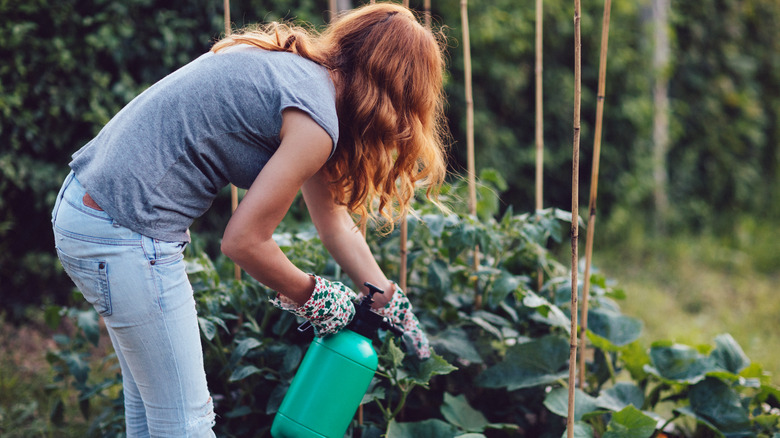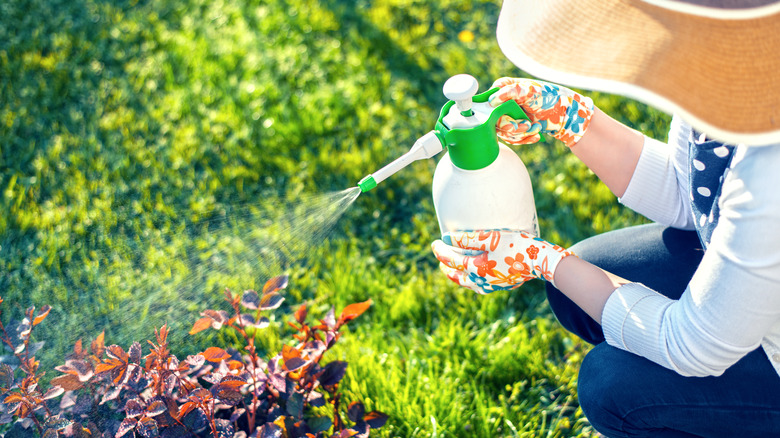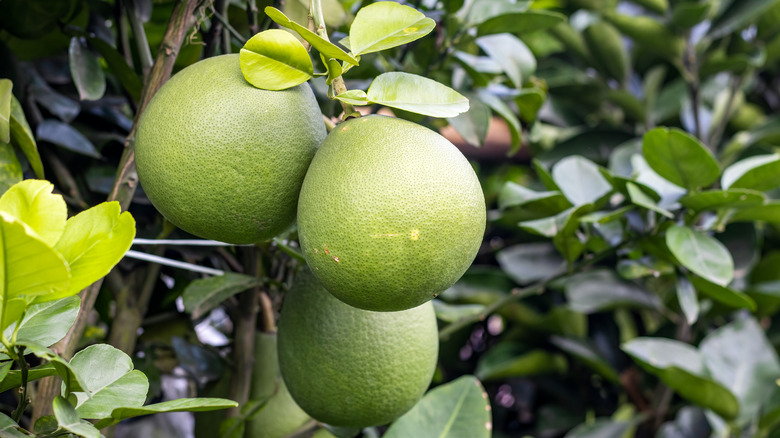Keep Bugs At Bay With The Peel Of This Tasty Fruit
Are bugs wreaking havoc in your garden? Many bugs are considered pests because they can cause significant damage to plants and crops. They feed on leaves, stems, and fruits, leading to stunted growth, wilting, and even death of the plants. Some bugs also transmit diseases to plants, further compromising their health. Additionally, bugs can attract other pests, such as rodents, that may cause further damage. Controlling bug populations is essential to maintaining the health and productivity of the garden, ensuring a bountiful harvest and thriving plants.
Before you rush out to buy a chemical insecticide, consider a super simple DIY option that is much healthier for you, your garden, and the environment. Instead, visit your local grocery store and pick up a pomelo, a large yellow citrus fruit, to make your own insecticide at home. Commercial chemical insecticides often contain harmful toxins that can pollute the soil, water, and air, causing damage to the ecosystem. In contrast, a homemade pomelo peel insecticide is natural and does not introduce harmful chemicals into the environment. Furthermore, commercial insecticides can also harm beneficial insects, such as bees and butterflies, which are essential for pollination. Homemade pomelo peel insecticide, on the other hand, specifically targets pests while leaving beneficial insects unharmed. It is also easy to make.
How to prepare and apply a pomelo peel insecticide
Preparing a homemade insecticide using pomelo peels is a simple and effective solution. To make the insecticide, you'll need pomelo peels, a knife, a spray bottle, and 2 cups of boiling water. After harvesting the pomelo fruit, cut the peels into small pieces. Place the peels into a pot of boiling water and let them steep for 24 hours. Once steeped, pour the liquid into a spray bottle. For added strength, add twenty drops of both peppermint and lemon oils to the mixture.
When applying the insecticide to your plants, use a spray bottle in the early morning or evening when the weather is cooler, to prevent the leaves from burning under the sun. Hold the bottle about 12 inches away from the plants and spray the leaves, stems, and fruits thoroughly. Make sure to cover all areas where bugs are present. Depending on the severity of the bug infestation, you may need to reapply the insecticide every seven to ten days. Monitor your plants regularly and reapply if you notice any new bug activity.
Why a pomelo insect repellent works
Crafting a homemade insecticide from pomelo peels can repel bugs naturally due to its composition. Pomelo peels contain compounds such as limonene and citral, which have strong insect-repellent properties. These compounds are known to repel a wide range of bugs, including aphids, ants, mosquitoes, and flies. While limonene is non-toxic, it can irritate sensitive skin, so take caution when creating and working with the insecticide. It's also a good idea to test it on small parts of your plants before applying it to the whole plant in case it does not respond well to your mixture.
Using a homemade pomelo peel insecticide is an eco-friendly alternative to commercial insecticides that can effectively repel bugs in your garden without introducing harmful chemicals into the environment. It also preserves the health of beneficial pollinators like bees and butterflies, which can increase the health and bounty of your garden crops. While chemical insecticides may seem feasible, why not try an affordable and safer option to protect and enhance the biodiversity of your garden?


